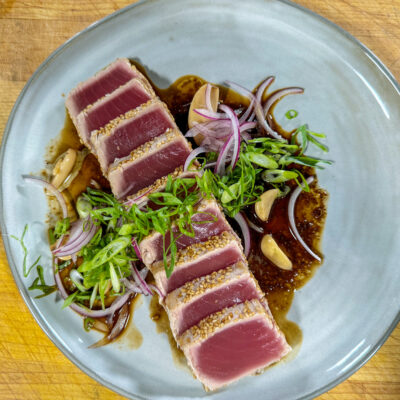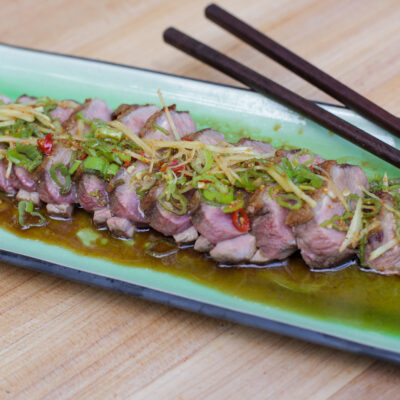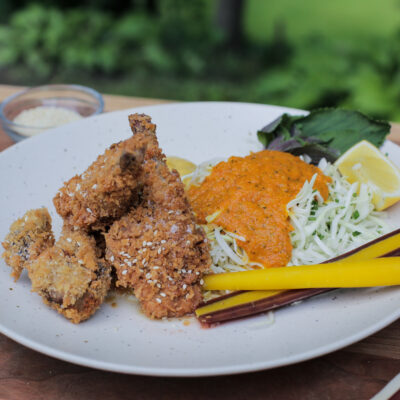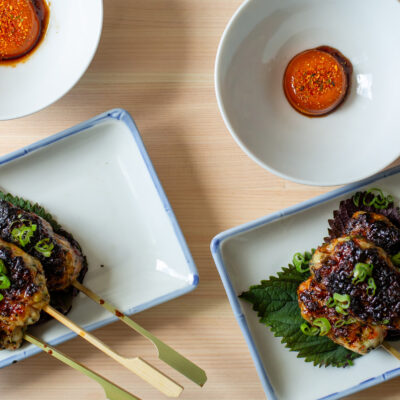Old-School Japanese Curry
Let’s dial it back to where it all began: old-school Japanese curry. Sweet-savory, fragrant, rich—and irresistible—this dish calls for the classic Japanese curry ingredients, that is, root vegetables, apple, and beef. And you thicken it using an old-fashioned roux, a French-style thickening agent for sauces made by cooking together butter and flour (a testament to this particular curry’s Western roots). We use S&B curry powder, a Japanese brand founded in the 1920s and widely available in Asian markets here, but you can also substitute with Madras curry (usually sold in cans in supermarkets) or any curry powder you like. You can riff on this basic recipe in endless ways. Use chicken, pork, or seafood instead of beef. Add other vegetables: celery, eggplant, green pepper, daikon, broccoli, spinach, or tomato wedges (add the tomato 10 minutes before finishing so it doesn’t break down). Use honey or even mango to sweeten the curry. Or throw the onions in at the beginning, with the beef, and totally brown them (like Tadashi does in his lamb curry, page 52), which will both help thicken the dish and add more intensely caramel flavors. Experiment and have fun.
Retro Curry
Ingredients
- 1 pound stew beef (or any cut of beef you desire), cut into bite-size cubes
- 2 teaspoons salt
- 1/2 teaspoon pepper
- 6 tablespoons butter
- 1 pound medium onions (about 3), peeled and coarsely chopped
- 8 ounces carrots (about 2 medium carrots), cut rangiri style (see notes below)
- 1 tablespoon grated ginger (about 1/3 ounce)
- 1 teaspoon grated garlic (about 2 cloves, peeled and grated)
- 1 large apple (about 8 ounces), peeled and grated
- 5 cups beef stock
- 3 tablespoons flour
- 2 tablespoons curry powder
- 2 tablespoons garam masala, an aromatic Indian spice mixture (or substitute with curry powder)
- 3/4 pound potatoes, peeled and cut into bite-size pieces
- Steamed rice, for serving
Instructions
Season the beef with 1 teaspoon of the salt and the pepper. Melt 2 tablespoons of the butter in a large pot over medium heat. Add the beef and cook, stirring frequently, for about 2 minutes, until the meat browns (to lock in the flavor). Add the onion, and cook, stirring constantly, for about 5 minutes, until the onion begins to turn translucent. Add the carrots, ginger, and garlic, and cook and stir for 2 more minutes. Add the apple, stock, and remaining 1 teaspoon of the salt. Reduce the heat to low, cover, and simmer for 1 hour.
While the ingredients are simmering, prepare the roux. Melt the remaining 4 tablespoons butter in a small saucepan over low heat. Add the flour, stirring constantly for about 3 minutes. The flour will first bind to the butter, then the mixture will break apart, and look like large blonde crumbs. At this point, add the curry powder and garam masala and stir for 2 more minutes, until the roux releases a heady, toasted curry fragrance. Remove the saucepan from the heat and set aside.
Once the ingredients have simmered for 1 hour, add the potatoes. (Add 1/2 cup of water at this point if the curry seems too dry; it should have the consistency of gravy.) Scoop a ladleful of liquid from the pot and add it to the roux, mixing together to create a paste. Add the roux paste to the large pot and mix well. Simmer for 20 more minutes, or until the potatoes are tender. Mix frequently, scraping the curry from the bottom of the pot, being careful not to burn. When the curry is ready, serve with steamed white rice.
______________________
How to Cut Rangiri Style
Rangiri is a handy Japanese cutting technique to create uniform pieces from unevenly sized roots like carrots, lotus, or burdock. This method also creates a lot of surface area on cut pieces, so they cook faster and absorb flavors better. The key to this technique is rolling the ingredient while you cut. Here’s how you do it: Cut a root on an angle, roll a quarter turn, cut on an angle. Repeat until you’ve cut up the entire root.







